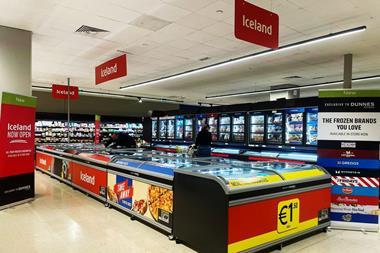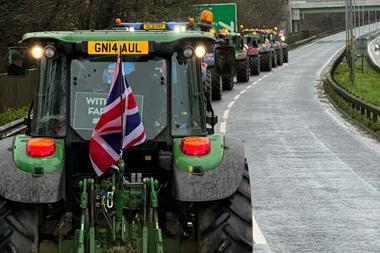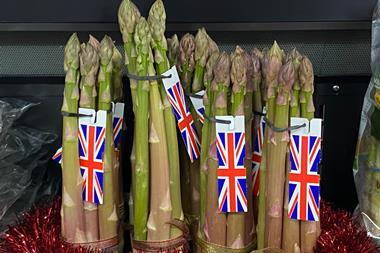Scotland enjoys a reputation for producing some of the finest beef, lamb and pork in the world. Its rolling green hills, clean air and high welfare considerations have shrouded its products with the kind of halo effect that consumers the globe over are only too keen to buy into.
Taken together, the farming and processing of red meat packs a meaty punch in the Scottish economy, and the sector - excluding ancillary industries and further processing - has a turnover of more than £1.6bn, contributing around 0.75% of the Scottish GDP, according to figures from the industry's representative body, Quality Meat Scotland.
The industry is in good health, and grew by a further 0.75% during 2005. Scottish processors sold 180,000 tonnes of beef, 27,500 tonnes of sheep meat, and 55,800 tonnes of pig meat, with an overall value of some £690m during 2005. Louise Welsh from QMS says: "Overall, red meat consumption in the UK is growing at a steady pace. A key strength is our reputation for high production standards backed by independently assessed farm assurance schemes."
UK lamb consumption is now rising at a steady rate following its dramatic fall in 2001, when supplies were reduced as a consequence of foot and mouth disease.
Meanwhile, beef and pork consumption rates are currently at their highest levels for 20 years, with UK beef consumption currently standing at 1.04 million tonnes - an increase of 14% since 2000 alone. More than 70% of all beef produced in Scotland is sold to England, and it's a market which remains vital for Scottish producers and exporters.
Welsh adds: "There is a huge demand for Scottish meat in England, but there is also a great deal of competition out there. That is why we are focusing heavily on the premium end. We use sophisticated advertising to send out positive messages on the tradition and heritage of stockmanship in Scotland and the Scottish environment, which is ideal for raising our grass-fed suckler herd and sheep flocks."
QMS has just embarked on a weighty PR and advertising campaign to further drive awareness and sales of Scotch beef as a premium product in the minds of consumers and also retailers.
"The kudos of Scottish simply lifts sales. It is definitely the instrument for retailers looking to raise their markets based on differentiation and quality. It is interesting to see other producers defining themselves as an 'alternative to Scottish,' reinforcing the powerful reputation of Scottish meat products as brand leaders," Welsh says.
The industry is also working hard to promote the benefits of eating red meat as part of a balanced diet and so spreading a positive meat message. QMS now employs a health and education co-ordinator to help meet this core aim. Producers agree that innovation remains, as always, a key component to success, with many Scottish producers moving into premium ready-to-eat products. For example, Browns Food Group, number 25 on our Top 50 list, has just launched its new brand of high-quality cooked meats, Tarbert Fyne Foods.
Nevertheless, the industry still faces challenges, particularly regarding beef, where it is dealing with continuously falling calf numbers, which, luckily for Scotland, are not down as dramatically as in England and Wales, but will inevitably mean some kind of reduction in supply in a couple of years' time.
Another concern is the recruitment and training of a skilled Scottish workforce. An increasing number of Scottish processing companies are finding it difficult to drive interest and recruit staff to the industry.
This can, of course, prove particularly testing for many of the smaller companies based in more remote locations where there is not a large body of people to draw from.
However, QMS is actively attempting to rectify this problem by working with local schools and colleges with a view to forging better lines of communication and educating the younger generation about the industry, which remains one of Scotland's greatest national treasures.
Taken together, the farming and processing of red meat packs a meaty punch in the Scottish economy, and the sector - excluding ancillary industries and further processing - has a turnover of more than £1.6bn, contributing around 0.75% of the Scottish GDP, according to figures from the industry's representative body, Quality Meat Scotland.
The industry is in good health, and grew by a further 0.75% during 2005. Scottish processors sold 180,000 tonnes of beef, 27,500 tonnes of sheep meat, and 55,800 tonnes of pig meat, with an overall value of some £690m during 2005. Louise Welsh from QMS says: "Overall, red meat consumption in the UK is growing at a steady pace. A key strength is our reputation for high production standards backed by independently assessed farm assurance schemes."
UK lamb consumption is now rising at a steady rate following its dramatic fall in 2001, when supplies were reduced as a consequence of foot and mouth disease.
Meanwhile, beef and pork consumption rates are currently at their highest levels for 20 years, with UK beef consumption currently standing at 1.04 million tonnes - an increase of 14% since 2000 alone. More than 70% of all beef produced in Scotland is sold to England, and it's a market which remains vital for Scottish producers and exporters.
Welsh adds: "There is a huge demand for Scottish meat in England, but there is also a great deal of competition out there. That is why we are focusing heavily on the premium end. We use sophisticated advertising to send out positive messages on the tradition and heritage of stockmanship in Scotland and the Scottish environment, which is ideal for raising our grass-fed suckler herd and sheep flocks."
QMS has just embarked on a weighty PR and advertising campaign to further drive awareness and sales of Scotch beef as a premium product in the minds of consumers and also retailers.
"The kudos of Scottish simply lifts sales. It is definitely the instrument for retailers looking to raise their markets based on differentiation and quality. It is interesting to see other producers defining themselves as an 'alternative to Scottish,' reinforcing the powerful reputation of Scottish meat products as brand leaders," Welsh says.
The industry is also working hard to promote the benefits of eating red meat as part of a balanced diet and so spreading a positive meat message. QMS now employs a health and education co-ordinator to help meet this core aim. Producers agree that innovation remains, as always, a key component to success, with many Scottish producers moving into premium ready-to-eat products. For example, Browns Food Group, number 25 on our Top 50 list, has just launched its new brand of high-quality cooked meats, Tarbert Fyne Foods.
Nevertheless, the industry still faces challenges, particularly regarding beef, where it is dealing with continuously falling calf numbers, which, luckily for Scotland, are not down as dramatically as in England and Wales, but will inevitably mean some kind of reduction in supply in a couple of years' time.
Another concern is the recruitment and training of a skilled Scottish workforce. An increasing number of Scottish processing companies are finding it difficult to drive interest and recruit staff to the industry.
This can, of course, prove particularly testing for many of the smaller companies based in more remote locations where there is not a large body of people to draw from.
However, QMS is actively attempting to rectify this problem by working with local schools and colleges with a view to forging better lines of communication and educating the younger generation about the industry, which remains one of Scotland's greatest national treasures.

















No comments yet